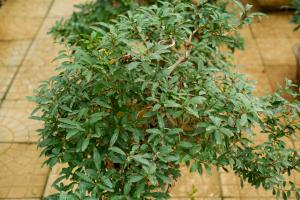How to Stop Mould in Plant Pots
Mould in plant pots is a common issue for gardeners, particularly those who cultivate herbs and indoor plants. The presence of mould can be hazardous not only to the plant but also to your respiratory system. But the good news is that you can eliminate it by following these tips:
1. Repot plants regularly
If you notice mould in your plant pots, the ideal solution is to repot the plant. Repotting enables you to remove the old soil and replace it with new, fresh soil. Using fresh soil helps to prevent the growth of mould, so make sure you do it regularly.
2. Dispose of old soil promptly
If you choose to reuse old soil, it's essential to sanitize it first. Soaking the soil in a solution of water and vinegar for several hours is an excellent way to remove any fungi that might be in it. However, if you're unable to get rid of the mould, it's best to dispose of the soil immediately.
3. Control humidity levels around the plant pot
Excessive moisture is the main cause of mould growing in pots. Therefore, you must monitor the humidity levels around your plant. You can do this by ensuring that the potting soil is not consistently moist or watering the plant sparingly. Also, positioning your plant pot where there is adequate airflow will help to reduce the humidity around it.
4. Clean plant pots regularly
It's advisable to clean your plant pots regularly, especially if you have had issues with mould before. You can use a mixture of water and bleach, vinegar, or hydrogen peroxide to clean them. Make sure you rinse the pots thoroughly and dry them thoroughly before using them again.
5. Choose the right soil type
The type of soil you use to pot your plants is critical in preventing the growth of mould in your pots. A well-aerated soil that can drain excess water quickly is the best type of soil to use. Adding perlite, vermiculite or coco coir will help to increase drainage and reduce moisture buildup.
6. Use a fungicide
If you have tried all the above methods and your mould problem persists, using a fungicide is your next option. Different types of fungicides are available in stores and online, so choose one that is suitable for your plant and potting soil type. Remember to follow the manufacturer's instructions when using it.
In conclusion, the key to preventing mould in plant pots is good hygiene, proper drainage, and maintaining optimum humidity levels. By following the tips above, you can successfully prevent and eradicate mould from your plant pots.

 how many times do yo...
how many times do yo... how many planted tre...
how many planted tre... how many pine trees ...
how many pine trees ... how many pecan trees...
how many pecan trees... how many plants comp...
how many plants comp... how many plants can ...
how many plants can ... how many plants and ...
how many plants and ... how many pepper plan...
how many pepper plan...































